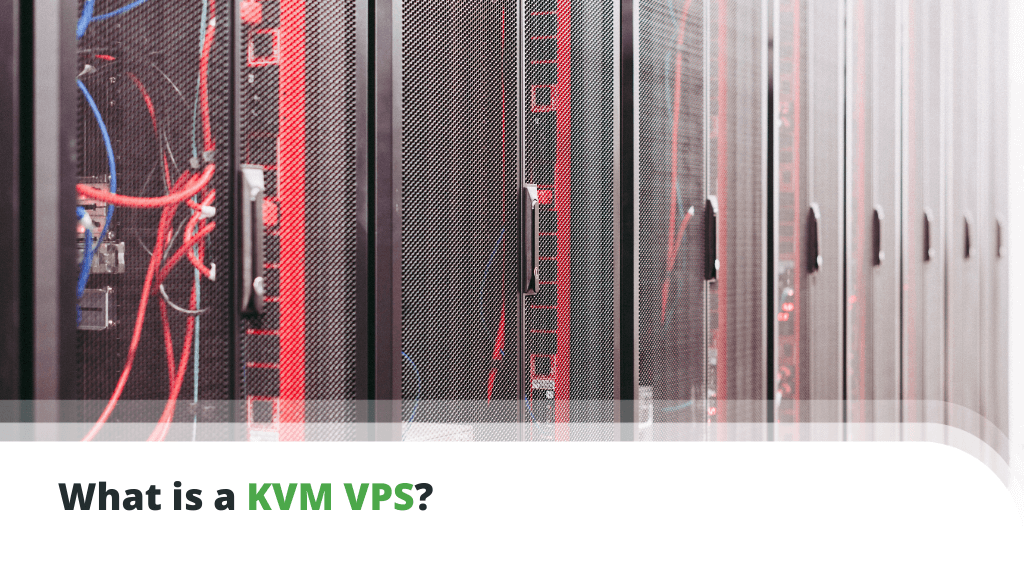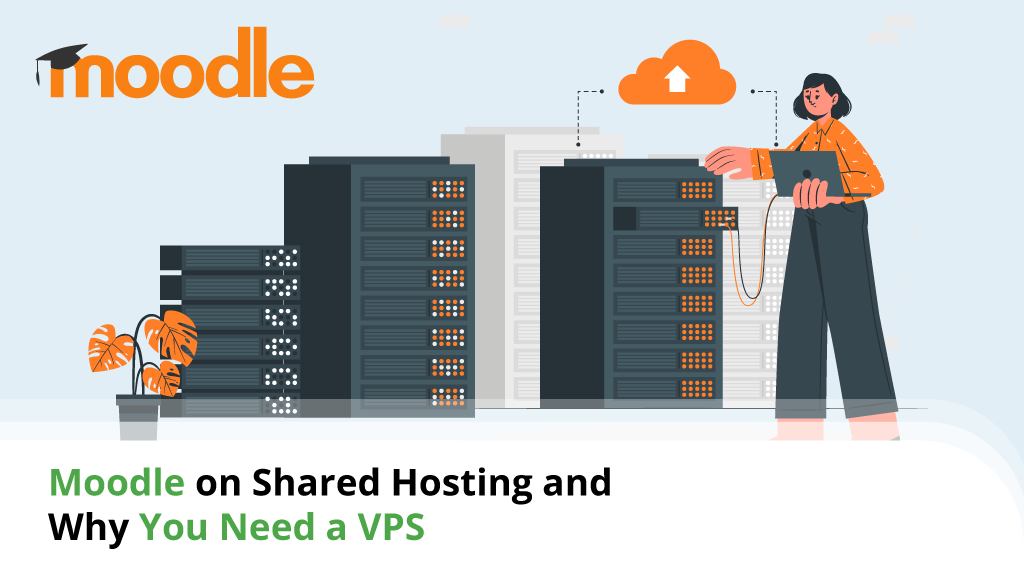
By now, you are probably well-aware of the sort of advantages a VPS (Virtual Private Server) hosting plan can give you over the less powerful and only slightly cheaper shared hosting. What you may not be familiar with is the technology behind the setup…
Today, we’ll look into KVM, one of the virtualization techniques hosting companies use to set up virtual private servers. We’ll also have a look at some of the alternatives and see how KVM compares to them.
Table of contents:
- What is a KVM VPS?
- KVM vs OpenVZ
- Additional Benefits of a KVM VPS
- How to Pick the Best KVM VPS?
- Conclusion
- FAQ
What is a KVM VPS?
When we talk about VPS solutions, you can have multiple hosting accounts situated on the same physical server. As far as the customer is concerned, they may very well be using a dedicated machine.
Unlike a shared hosting account, a VPS gives you the chance to host and manage resource-intensive projects without sacrificing performance. If you go for a self-managed plan, you can even pick your operating system of choice and receive root access for full control over your server.
This is all possible thanks to virtualization.
Virtualization effectively means running one or more virtual machines (or VMs) on a single physical server. The VMs utilize the same system resources but they run independently. You can install additional software and configure each account the way you want. The best thing is all users have their own caged resources and they cannot interfere with each other.
But what kind of virtualization are there?
KVM stands for Kernel-based Virtualization Machine, one of the many ways of creating VMs on a computer or a server. As its name suggests, it’s a part of the Linux kernel, and it transforms the kernel into what is known as a hypervisor – the software responsible for creating and running virtual machines.
KVM provides hardware-assisted virtualization. This means utilizing the host’s hardware resources to create full virtualization. In a full virtualization setup, the user accounts have their own set of hardware resources and can run an operating system independently from the host. The main benefit is they operate in full isolation from both the host and each other.
Full virtualization has a number of different applications. For example, security researchers use it to monitor the behavior of malicious software without risking their real machines. Developers utilize it to test their products on different platforms.
When it comes to web hosting, KVM virtual machines are the VPS packages you get for hosting websites.
You effectively get a slightly less powerful version of a dedicated server at a fraction of the cost. Your VPS has guaranteed hardware resources available to you at any time. You don’t need to worry about anyone else overloading the server and affecting your website’s performance.
Cyberattacks and malware infections on neighboring accounts on the same physical machine will have no impact on you either, and your dedicated IP won’t be blacklisted if someone else starts sending spam.
KVM vs OpenVZ
KVM is far from the only virtualization technology on the market.
Products from organizations like VMware and the Linux Foundation can also create a full virtualization environment. There are alternative technologies that allow the so-called operating-system-level virtualization – a different method for running multiple machines on a single computer.
OpenVZ is one of them.
In OS-level virtualization, the kernel allows the existence of the so-called containers. A container is similar to a VM in that it is allocated a predetermined amount of hardware resources.
OpenVZ calls these containers Virtual Private Servers, and the technology has wide application in web hosting. OS-level virtualization can be useful for a number of other tasks, including load balancing and live migration.
It may seem like the two types of virtualization practically do the same thing, but there are a few key differences.
OpenVZ and other OS-level virtualization technologies utilize the host’s Linux kernel, which means the containers can only run on Linux.
Modifications to the kernel are not allowed, either, which further limits the customization options. A KVM VM or VPS, on the other hand, runs completely independently from the host, and you can install pretty much any operating system you want.
Another difference between KVM and OpenVZ is the way resources are allocated. With hardware-assisted virtualization, every single virtual machine is given a predetermined amount of processing power, RAM, and disk space.
OpenVZ also has resource limits on its containers. For example, any CPU or RAM that is free is available to whichever container needs it. The result of all this is that resource-intensive apps in one or two containers could start consuming too much memory and disrupt the entire server performance. The same goes for security, as OS-level virtualizations do not provide the same levels of container isolation you can get with a VPS.
On the plus side, OpenVZ is easier to set up and requires less in terms of hardware resources compared to KVM. As a result, such services usually utilize less powerful servers and tend to be cheaper. The technology allows for easier resource management and you can change some of the resource limitations for a container without the need to reboot it.
KVM requires more hardware resources, but experts agree that if it’s properly set up – it will perform better. That’s why we, at ScalaHosting, base our VPS solutions on KVM virtualization.
Additional Benefits of a KVM VPS
Overselling is not uncommon with hosting providers. It’s the act of putting too many hosting accounts on a single server in an effort to offer a cheaper package and attract more customers. It’s usually done with shared hosting plans, but the resource management system of OS-level virtualization containers allows it on OpenVZ VPS solutions as well.
The results are usually pretty obvious – an overcrowded server can rarely meet everyone’s demands and you often suffer from poor performance. This is definitely something you should bear in mind if you’re looking for a cheap hosting plan.
Overselling servers that use KVM virtualization is not unheard of, but it’s much trickier to pull off, thanks to the technology’s stricter resource allocation rules.
How to Pick the Best KVM VPS?
If you have your heart set on a VPS, it pays to know what type of virtualization it’s based on.
Overall, VPS servers created with KVM and other hardware-assisted virtualization technologies tend to be more powerful and secure when properly configured.
How to pick the best one, though?
Take a good look at your options. You first need to decide what sort of VPS you want to use. A managed server is easier to operate but gives you fewer customization options. It usually comes with a preinstalled operating system and many of the management tools already available.
By contrast, with a self-managed server, you get root access and full control. The extra freedom comes with more responsibilities, though. You’ll need to know how to manage the server, install the required applications, and keep them updated. Plus, deal with all the technical issues that you encounter along the way.
Speed and reliability are a major consideration for any website owner. Apart from your own impressions, you can check reviews and opinions from people who have actually used the service. After all, you can always gain some insights that are invisible to potential clients.
Then comes your server location.
See where the provider’s data centers are situated, choose the one that’s closest to you, and consider running your website through a Content Delivery Network (CDN) to reduce bandwidth usage and improve loading speeds.
You shouldn’t underestimate the importance of technical support, either. How much assistance you can expect depends on the type of VPS you run. If you’re on a managed plan, your hosting provider is responsible for configuring and managing the virtual server, which is excellent for beginners. Analogically, experienced webmasters and developers often go for unmanaged services.
Don’t forget about scalability.
One of the main advantages of a VPS is the fact you can easily add more hardware resources whenever you need them. Different hosting providers offer different packages, though, so be sure to check what’s available before you sign up.
Ideally, you will have the option of customizing your plan and choosing your exact resource parameters.
Conclusion
Virtualization technologies like KVM have sparked something of a revolution in the web hosting industry. Thanks to virtual private servers, website owners can have the security, control, and reliability of a dedicated server without having to pay hundreds of dollars per month. The incredible flexibility when it comes to resource management means you can easily focus on growing your website without the need for hands-on management and big financial investments.
FAQ
What is KVM?
KVM stands for Kernel-Based Virtual Machine, and it’s a virtualization technology that’s been a part of the Linux kernel for more than 13 years. It turns it into a hypervisor and utilizes the hosting hardware to perform full virtualization.
Can I install any operating system on a KVM VPS?
KVM provides full virtualization, and the VMs and VPSs created work completely independently. This allows the installation of just about any operating system. Nevertheless, it’s good to check with your hosting provider to see if the OS you want to use is supported.
Are there other virtualization technologies that can create and manage a VPS?
There are numerous products that use different techniques for creating a virtual environment on a host. Each one of them has their strengths and weaknesses. What is more important for you as a website owner is which of the two main types of virtualization your hosting provider offers.
The so-called OS-level virtualization can also be used to create a VPS, and it’s cheaper and easier to set up. Still, the full virtualization provided by KVM offers better isolation and improved performance.
Can I use KVM at home?
KVM is a part of the Linux kernel, which means it’s available on any Linux distribution. You can easily use it to create virtual machines on your home Linux PC for free. There are plenty of guides and tutorials that should help you if you get stuck, and there’s even a Graphical User Interface (GUI) program in case you’re not really comfortable working with a command terminal.



